Swift's telescope reveals birth, deaths and collisions of stars through through 1 million snapshots
The Swift Observatory passed a milestone: 1 million snapshots of the universe. These exquisite and revealing pictures have captured the births and deaths of stars, gravitational waves and comets.
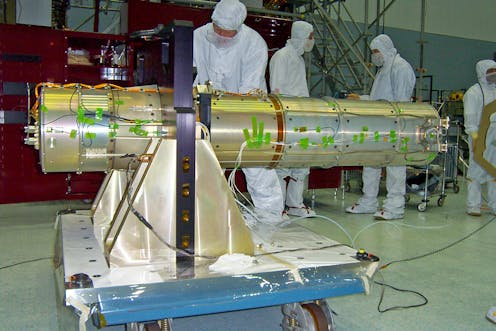
Imagine if the color camera had never been invented and all our images were in black and white. The world would still look beautiful, but incomplete. For thousands of years, that was how humans saw the universe. On Earth, we can only see part of the light that stars emit.
Much of what we can’t see – in the infrared, the ultraviolet, the X-ray and the gamma ray wavelengths – is blocked by the Earth’s atmosphere. For the most part, this is a good thing. The atmosphere traps infrared light keeping the Earth warm at night and blocks high-energy ultraviolet light, X-rays and gamma rays, keeping us safe from deadly cosmic radiation, while letting in visible portions of the spectrum of light. For astronomers, however, this has a drawback: We look at the universe with one eye shut, unable to receive all of the information the universe is sending to us.
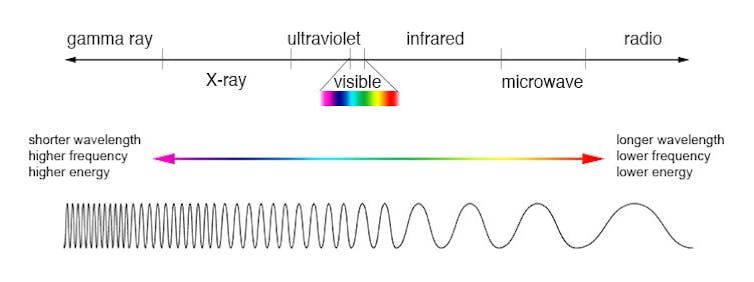
Launched on November 20, 2004, and orbiting an altitude of 340 miles, NASA’s Neil Gehrels Swift Observatory has three telescopes that monitor the universe using wavelengths of light that are blocked by Earth’s atmosphere. These included the X-Ray Telescope, the gamma-ray-sensitive Burst-Alert Telescope and the Ultraviolet Optical Telescope (UVOT). The UVOT recently delivered its 1 millionth image – data that astrophysicists like me use to gain insights into everything from the origins of the universe to the chemical composition of nearby comets.
Watching the birth of black holes
Swift’s primary mission is to study the afterglow of gamma ray bursts (GRBs) – which document the birth of black holes. Black holes are forged in the most violent explosions in the universe – the explosion of a massive star or the merging of two neutron stars (the shriveled husks left over from past stellar explosions). These explosions are so powerful – producing tens to hundreds of billions of times more energy than the sun – that even though they occur billions of light years away from Earth, they can still be detected by instruments like Swift. In fact, the first GRBs were detected by the Vela satellites, which were built to detect the explosions of nuclear weapons.
Over nearly 14 years, Swift has studied over a thousand GRBs. In doing so, it has revealed what powers them and given us glimpses into the furthest reaches of the cosmos, to the time when the first stars were being formed after the Big Bang.
However, one of the things you learn working on a space telescope mission is that if you build it, they will come. The mission provides capabilities to the community of astrophysicists – simultaneous X-ray/UV imaging and a rapid response to requests to observe and photograph specific sections of the sky – which are only available to Swift. We can focus our telescopes on an object of interest within hours of a “Target of Opportunity” request through our website, something no other mission can do. UVOT also fills an important niche by observing larger areas of the sky than can be observed with the more powerful UV instruments aboard the Hubble Space Telescope. These capabilities have proved a boon to the community and enabled study all sorts of objects and phenomenon beyond GRBs.
Swift’s ultraviolet-aided discoveries
Nearby galaxies are full of activity with new stars being formed. Swift is able to capture panoramic ultraviolet images that highlight the youngest, most massive stars in these galaxies. This gives us insight into what the universe has been doing over the last few hundred million years. My research team’s work has focused on nearby galaxies – like Andromeda and the Magellanic Clouds – to reveal what processes drive their past and ongoing star formation.
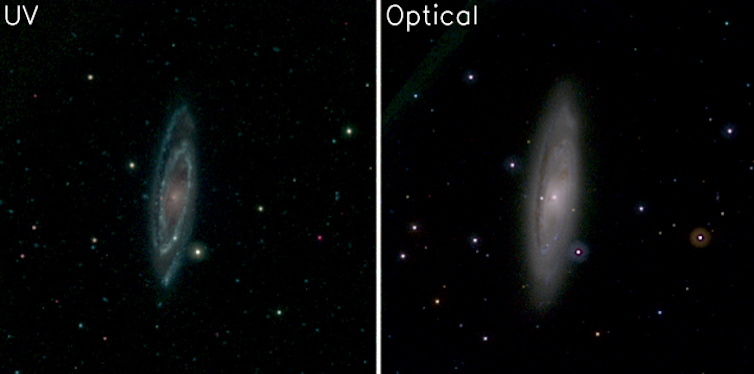
With UVOT, we get a much better view of supernova explosions. These can occur when a white dwarf, the remnant of a star like the sun, explodes, or during the final death throes of a massive star, more than eight times the mass of the sun. These events generate enormous amounts of ultraviolet light, and Swift has a unique ability to observe them within hours of discovery.
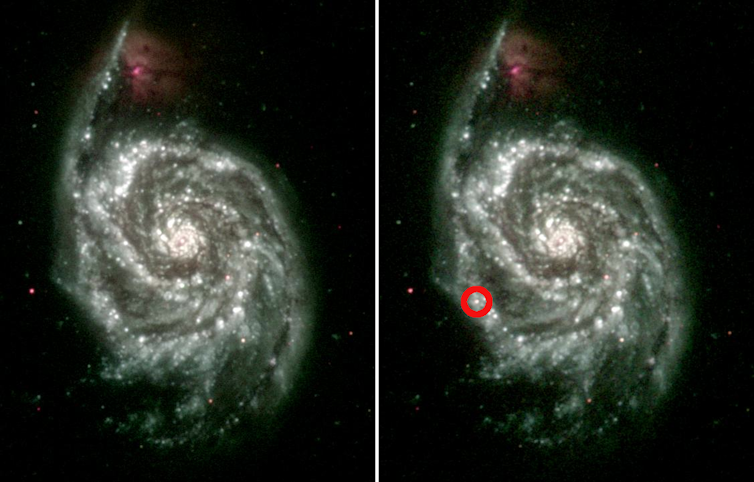
Comets sweep through our solar system, transforming from a frozen solid ball to a vapor as they approach the sun and creating magnificent tails of ionized particles. Swift studies these comets, and analyzes their chemical composition by breaking the light they emit into different wavelengths. Swift also allows scientists to measure a comet’s rotation by seeing how the light changes over time. This has revealed that violent eruptions on the comet surface can dramatically alter a comet’s path.
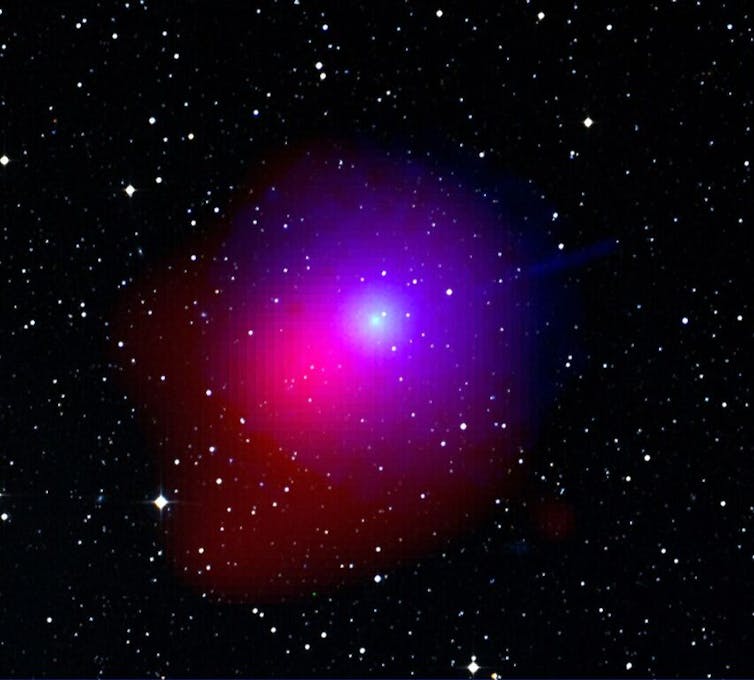
One of the most exciting discoveries that Swift made was connected with the recent discovery of gravitational waves by the Laser Interferometer Gravitational-Wave Observatory (LIGO). Gravitational waves are distortions in the fabric of spacetime created by the motions of extremely massive objects. In August of 2017, two neutrons stars collided in a distant galaxy, creating gravitational waves powerful enough to be detected on Earth. Swift was one of an army of telescopes that looked for the source of the gravitational waves. The mad scramble over those few days led to one of the most exciting discoveries of the last decade – a luminous afterglow from the source of the gravitational waves. This has opened up new branches of science by connecting a new way of studying the universe – through gravitational waves – to the traditional way – through light.
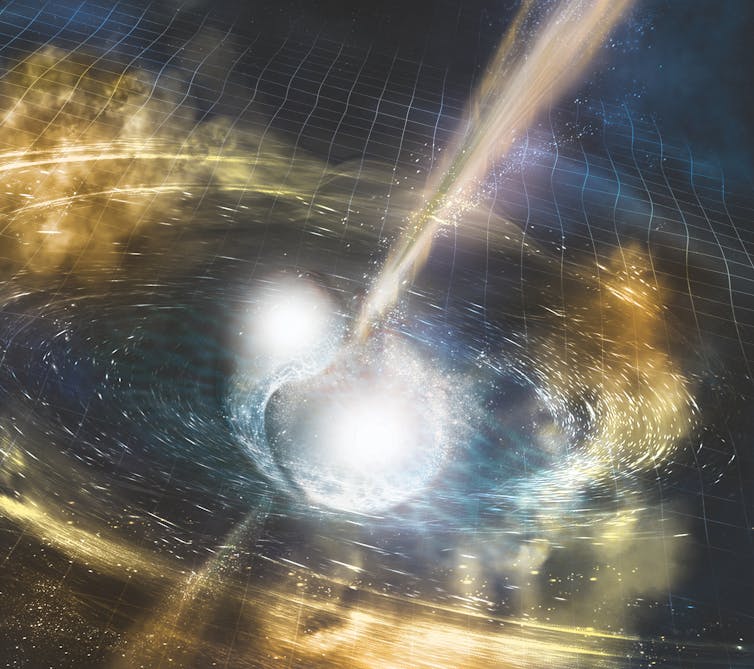
UVOT has been taking snapshots of the universe since 2004 and finally piled up its millionth image. Its success is a testament to the international team of engineers, scientists and staff at the three institutions that support it – the Pennsylvania State University; Mullard Space Science Laboratory in Surrey, England; and NASA’s Goddard Space Flight Center in Greenbelt, Maryland. It has been my privilege to be a part of this team for the last nine years. What does the future hold for UVOT? We hope to find more sources of gravitational waves, survey nearby galaxies, study even more supernovae, and monitor how objects in the universe change over time.
Here’s to the next million images.
Michael Siegel is a Research Professor at Pennsylvania State University and receives research funding from NASA.
Read These Next
The world risks forgetting one of humanity’s greatest triumphs as polio nears global eradication − 7
Polio may finally be defeated in the next 5 years. Will the world recognize what an extraordinary achievement…
Medieval peasants probably enjoyed their holiday festivities more than you do
The Middle Ages weren’t as dreary and desperate as you’d think, and peasants often had weeks of…
Autocracies in transition: In 2025, Cameroon and Tanzania rulers clung to power — but look more vuln
The countries, whose respective leaders recently won widely disputed elections, offer contrasting examples…





